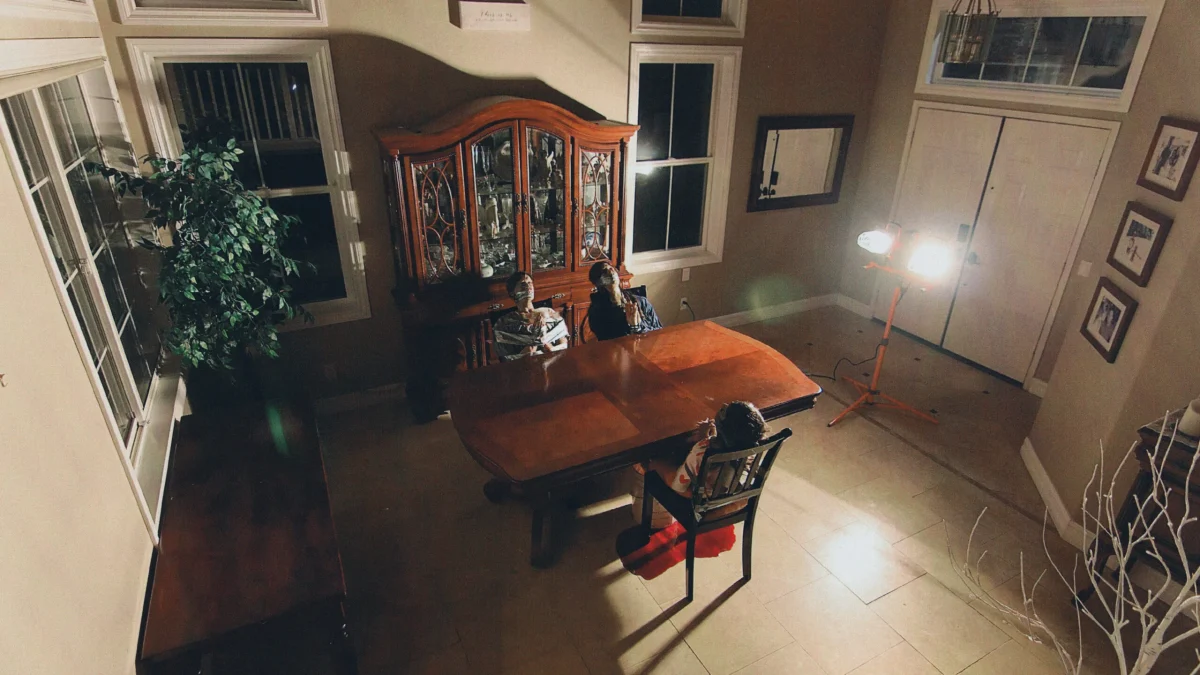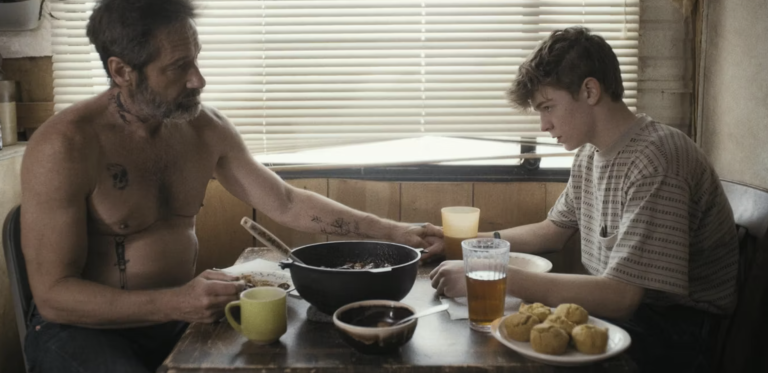Stuart Ortiz’s “Strange Harvest” (2024) blurs the lines between truth and fiction as it follows a supernatural horror narrative through the framework of a true-crime documentary. It employed a pseudo-documentary structure, as seen in films like “The Poughkeepsie Tapes” (2007) and, more recently, “Lake Mungo” (2008). It’s a choice of approach, much like any other, to follow a narrative. Ortiz uses it to cover a horrifying occult-themed tale like an investigative mystery thriller. The latter of which is something that David Fincher has mastered throughout his career, particularly in projects like “Zodiac” (2007).
Fincher brings a crisp and clean digital aesthetic through his visual language, which feels unnervingly cold and distant. Unlike Fincher, Michael Haneke employs a far different approach in “Caché,” filmed almost entirely using the naturally available light. It feels intentionally devoid of conventional norms of beauty in art.
Still, it manages to feel as clinical and unnerving as Fincher’s film. The former investigates the impact of a real-life killer through a personal lens, while the latter offers a scathing critique of the bourgeoisie. In these cases, both films evoked a visceral reaction because the form was effectively used, irrespective of their approach.
“Strange Harvest” initially struggles in this regard, and its fuzzy visual language isn’t to blame. The genre works in a way where you know what you’re watching is not true, but you get led to suspend your disbelief. Ideally, it should compel you to consider it a genuine documentary.
Ortiz struggles to find that balance in its content and presentation, leading to an awkward beginning. It takes some time for the film to find its groove, but when it does, it starts firing on all cylinders. Moreover, it includes splashes of slasher tropes, as it follows an investigation into the lives of victims, who were usually murdered by spattering their blood.
It employs the shock value of slasher projects that are bound to make you look away from their graphic details. However, Ortiz doesn’t lean heavily in that direction. Instead, he makes the film largely about the trauma resulting from the brutality of these crimes. So, it also becomes a brooding mystery as it veers into the unknown through its supernatural horror elements.
The film presents its culprit as an enigma, who affects several lives through an undying devotion to his beliefs. That makes it a far more investable affair, which could have seemed like yet another inane collection of jump scare-laden moments.

The premise revolves around Mr Shiny, the said culprit behind a string of serial killings across the country. He sends shock waves through his brutal and unpredictable killings and vanishes, only to return years later with a near-identical pattern of murders. It’s a narrative that sounds stranger than fiction but gets presented in an eerily familiar reality. So, it’s easy to mistake it for reality.
With that unclear distinction, Ortiz implores us to consider the meta-elements within the genre, keeping a door open for it to be considered a fact or a blatant fabrication. It doesn’t outright reject the supernatural, which makes those unknowable elements seem far more terrifying.
While doing so, the film doesn’t turn into one of those overtly self-serious horror dramas that end up feeling like their own parodies. Instead, it uses its found-footage elements and its deftly laid-out investigative details. They evoke the intended horror through an unfiltered presentation, devoid of the genre theatrics.
Besides that, the film amps up its horror quotient by presenting its torturer as a riddle, unpeeling layers about his personality through the investigation instead of offering just a barrage of details. Ortiz presents his elusive personality with a deliberate pace, which is the key to the film’s net psychological impact.
In terms of the filmmaking approach, “Strange Harvest” works best when it reveals data in a way that feels like it has been from an actual news bulletin. You see abandoned houses and gloomy exteriors that feel far creepier than any detailed expositions on any given day.
Whether it’s the man’s menacing exploits or his possessions, the film documents them through a matter-of-fact approach, which makes nearly all the difference. That’s where the film shines, as it leaves you shaken to the core. If there’s one thing that doesn’t translate as well, it’s the detective testimonies. They feel staged, unlike something like “Lake Mungo,” where interviews feel shockingly real.
“Strange Harvest” doesn’t quite reach the same level of authenticity in that regard. Still, Ortiz manages to build a fascinating mythology about Mr. Shiny and his mystical beliefs, which, in themselves, are enough to send shivers down your spine. It also offers us the satisfaction of solving the pattern of his connections to all the deaths, as his elusiveness is present alongside his need for attention. That’s essentially what makes Ortiz’s film an arresting watch.








